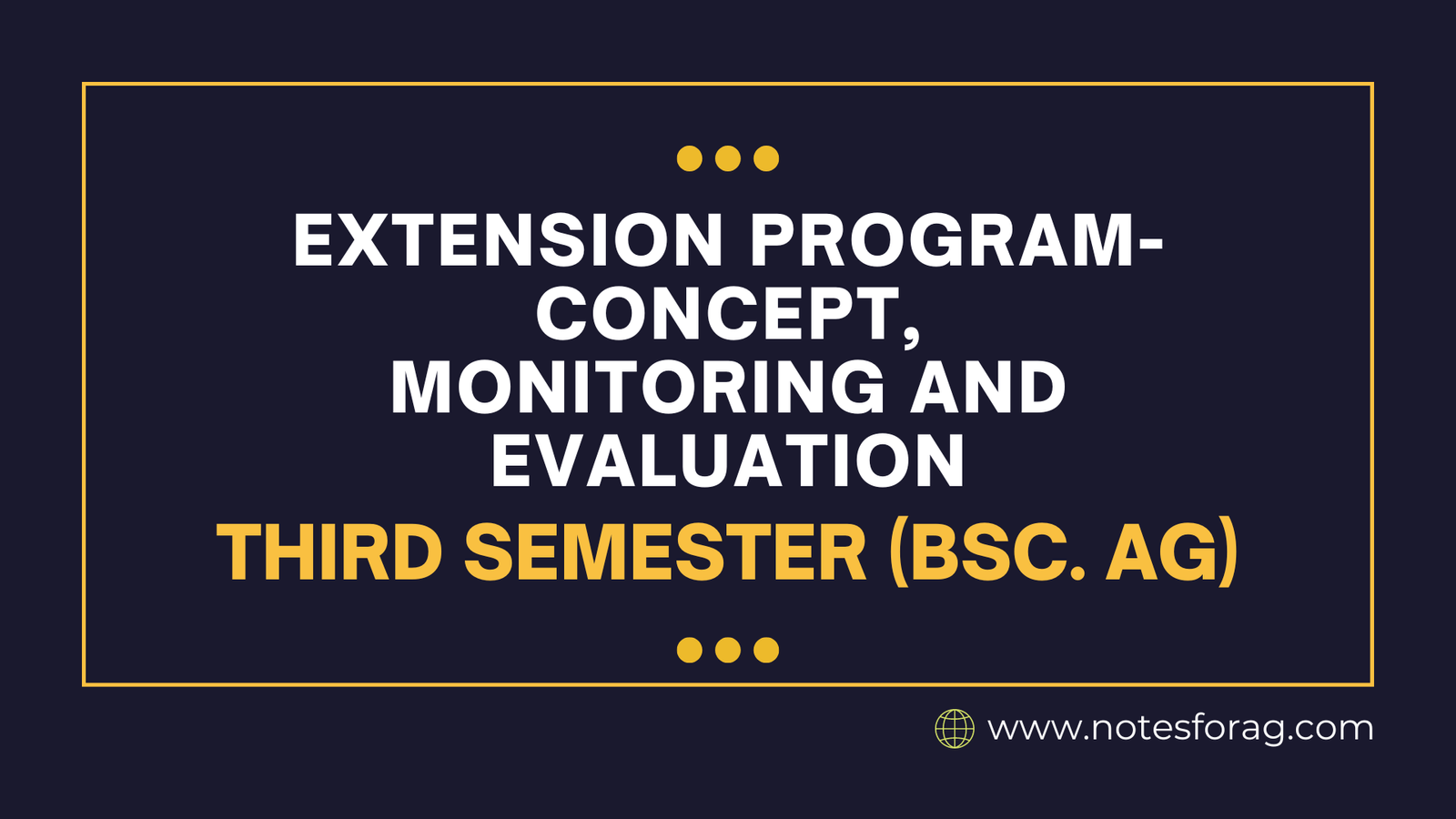Monitoring and evaluation (M&E) are critical activities in extension program for tracking progress and determining impact. Monitoring is the continual gathering of data during program implementation to ensure that activities are on track, whereas evaluation examines the program’s effectiveness and outcomes after implementation. M&E work together to give insights for improving program effectiveness, assuring accountability, and directing future decision-making to meet agricultural development objectives.
Table of Contents
Concept of Extension Program
Extension programs play an important role in promoting community development and education. Their primary goal is to transfer knowledge and skills from research institutes to the general public, effectively bridging the gap between academic research and practical application. These programs have evolved over time, beginning in the late nineteenth and early twentieth centuries with the establishment of agricultural extension services to improve farming techniques using scientific methods. This concept has evolved to include sectors such as health, education, and economic development in addition to agriculture.
Extension programs in agriculture strive to empower farmers by providing them with important knowledge on best practices, innovative technologies, and sustainable approaches. This method not only promotes production, but it also benefits local economies and food security. Similarly, in the health sector, extension services promote community education on health behaviors, illness prevention, and nutrition, which has the potential to significantly enhance public health outcomes.
Monitoring Extension Programs
The importance of monitoring in extension initiatives cannot be emphasized. It provides a fundamental foundation for measuring progress toward established goals and allows program administrators to assure accountability in resource allocation. Effective monitoring allows stakeholders to determine whether the extension efforts being undertaken are producing the desired results and allows for timely adjustments as needed.
Performance indicators are critical instruments in the monitoring process. They establish measurable parameters for assessing how well an extension program is doing. These indicators might range from quantitative measures like the number of participants reached to qualitative evaluations of participant satisfaction and skill development. By developing specific performance indicators, teams can methodically track progress and determine whether the program is on target.
In terms of data collection methods, a mixed approach is frequently the most productive. Quantitative data can be gained through surveys, attendance records, and baseline comparisons, whereas qualitative data can be gathered through interviews, focus groups, or participant feedback sheets. The use of multiple data gathering strategies broadens and deepens the scope of monitoring operations, resulting in more comprehensive evaluations of program efficacy.
Regular evaluation cycles are another important aspect of monitoring extension efforts. Establishing a monitoring activity schedule—whether quarterly, semi-annually, or annually—ensures that data is collected regularly throughout time, allowing for trend analysis, which is critical for making educated decisions. Effective monitoring approaches include employing dashboards to see real-time data, developing feedback loops to involve participants, and altering program strategies based on monitored outcomes.
Evaluating the Impact of Extension Programs
Evaluation is an important step in determining the effectiveness and impact of extension activities. It provides a systematic method for measuring results and determining the amount of success attained by these projects. Understanding evaluation procedures is critical because they may be roughly divided into formative and summative approaches. Formative evaluation occurs throughout program implementation to refine processes and improve program delivery. In contrast, summative evaluation occurs after implementation, focusing on overall outcomes and the program’s efficacy in reaching its objectives.
To accurately assess the effects of extension activities, both qualitative and quantitative measures can be used. Quantitative metrics are measurable facts that can be statistically examined, such as participation rates and changes in knowledge or behavior.
In contrast, qualitative metrics provide insights into participant experiences and perspectives, which are frequently acquired through interviews, focus groups, or open-ended surveys. The combination of these approaches enables a more comprehensive review by gathering both numerical data and contextual understanding of the participants’ experiences.
The evaluation procedure relies heavily on stakeholder feedback. Involving stakeholders, such as program participants and community members, increases engagement and provides useful information. Their comments can identify opportunities for development and creativity, ensuring that extension programs continue to meet the requirements of the community. Furthermore, longitudinal studies are required to understand the long-term consequences of extension programs.
Monitoring and evaluation provide critical feedback for improving program execution, increasing accountability, and guiding future planning and decision-making in extension services. They contribute to ensuring that resources are used effectively to achieve the targeted agricultural development outcomes.
Frequently Asked Questions
What is an extension program in agriculture?
An agricultural extension program aims to disseminate knowledge, skills, and technologies from researchers or professionals to farmers and rural communities. The purpose is to improve agricultural methods, boost productivity, and improve rural livelihoods through training, demonstrations, and consulting services.
Why are monitoring and evaluation important in an extension program?
Monitoring and evaluation (M&E) are critical for tracking progress, assessing program effects, and ensuring that resources are used properly. Monitoring ensures that tasks are completed on time and within budget, whereas assessment assesses whether the program achieved its objectives and identifies areas for improvement.
Related Articles

